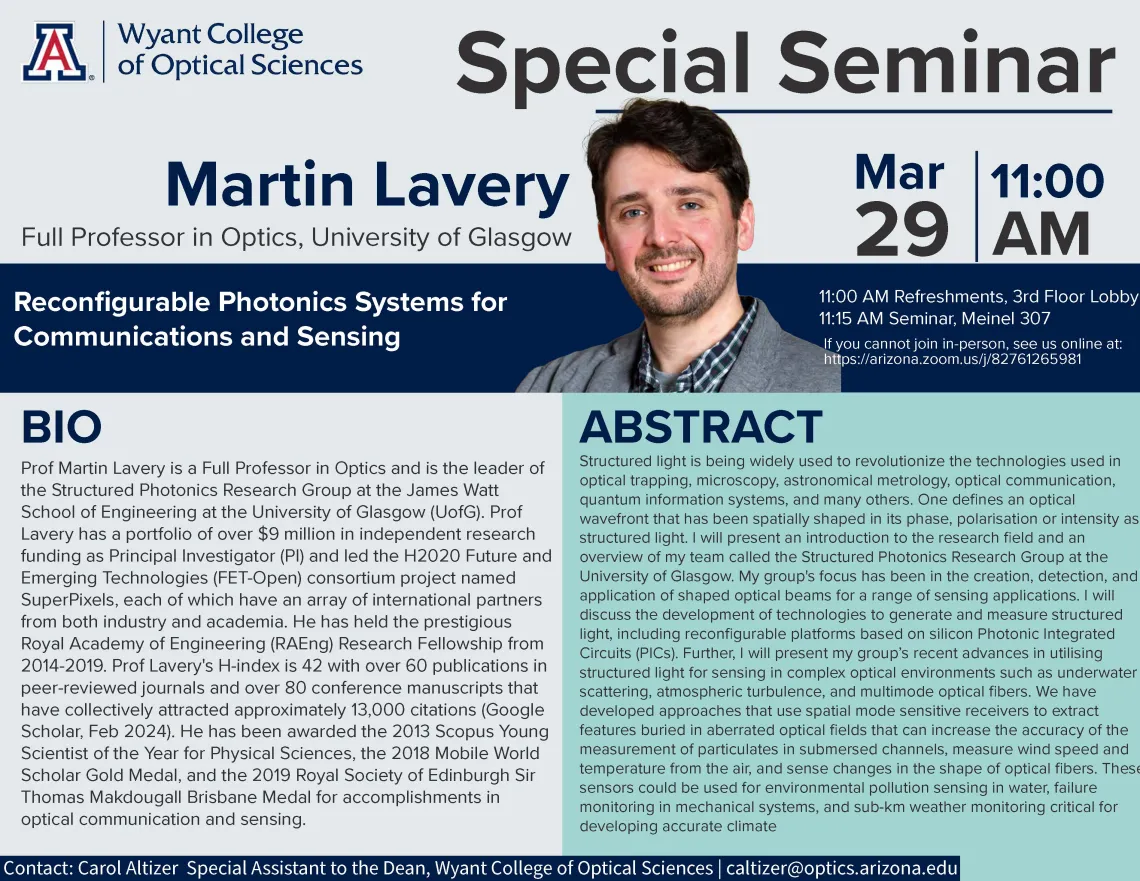
When
Where
Title
Reconfigurable Photonics Systems for Communications and Sensing
Abstract
Structured light is being widely used to revolutionize the technologies used in
optical trapping, microscopy, astronomical metrology, optical communication, quantum information systems, and many others. One defines an optical wavefront that has been spatially shaped in its phase, polarisation or intensity as structured light. I will present an introduction to the research field and an overview of my team called the Structured Photonics Research Group at the University of Glasgow. My group's focus has been in the creation, detection, and application of shaped optical beams for a range of sensing applications. I will discuss the development of technologies to generate and measure structured light, including reconfigurable platforms based on silicon Photonic Integrated Circuits (PICs). Further, I will present my group’s recent advances in utilising structured light for sensing in complex optical environments such as underwater scattering, atmospheric turbulence, and multimode optical fibers. We have developed approaches that use spatial mode sensitive receivers to extract features buried in aberrated optical fields that can increase the accuracy of the measurement of particulates in submersed channels, measure wind speed and temperature from the air, and sense changes in the shape of optical fibers. These sensors could be used for environmental pollution sensing in water, failure monitoring in mechanical systems, and sub-km weather monitoring critical for developing accurate climate
Bio
Prof Martin Lavery is a Full Professor in Optics and is the leader of the Structured Photonics Research Group at the James Watt School of Engineering at the University of Glasgow (UofG). Prof Lavery has a portfolio of over $9 million in independent research funding as Principal Investigator (PI) and led the H2020 Future and Emerging Technologies (FET-Open) consortium project named SuperPixels, each of which have an array of international partners from both industry and academia. He has held the prestigious Royal Academy of Engineering (RAEng) Research Fellowship from 2014-2019. Prof Lavery's H-index is 42 with over 60 publications in peer-reviewed journals and over 80 conference manuscripts that have collectively attracted approximately 13,000 citations (Google Scholar, Feb 2024). He has been awarded the 2013 Scopus Young Scientist of the Year for Physical Sciences, the 2018 Mobile World Scholar Gold Medal, and the 2019 Royal Society of Edinburgh Sir Thomas Makdougall Brisbane Medal for accomplishments in optical communication and sensing.
